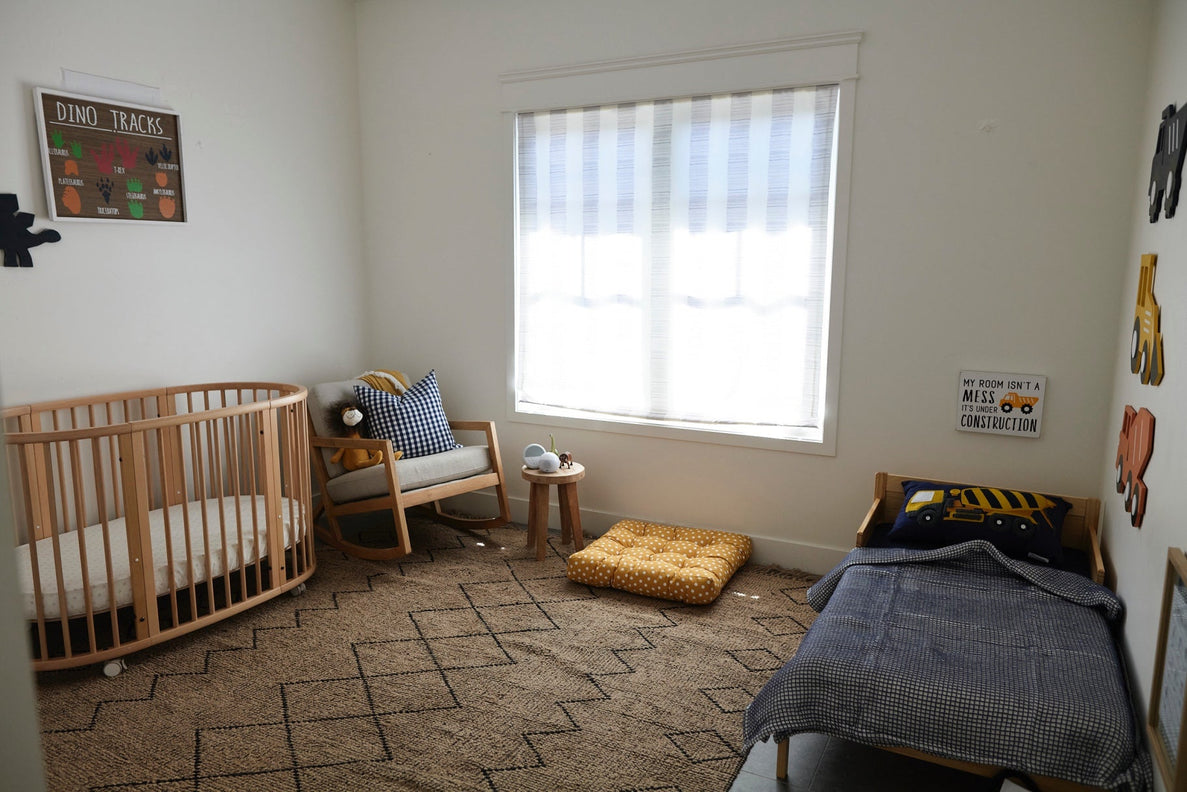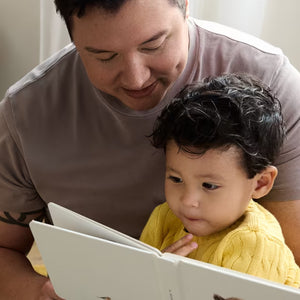Siblings may need to share a room for many reasons: maybe you’ve moved into a new home, or you’re adding a new baby to your family, or it’s time to move the baby out of your room. Whatever the reason, there are times our children outnumber our bedrooms. So how can we help little ones share a space without destroying sleep? Let’s talk about it.
When can you move siblings into the same room?
This really depends on your unique family circumstances and preferences. But I want you to know that my most valuable tip for moving siblings into the same room is to start with two good sleepers.
We want your baby to be in your room or a separate space until there are few night wakings. This reduces the potential for your children to disturb each other at bedtime or wake each other at night.
Little ones who struggle to sleep before sharing a room can turn into a disaster after the siblings move in together. If you need help with this, I have classes that can teach you how to have great little sleepers.
-
For toddlers 2-4 years old, check out Toddler Sleep Training where you’ll learn how to help your toddler become a successful sleeper – which will prepare her for sharing a room with a sibling.
-
For older babies, The 5–24 Month Collection will give you all the tools you need to reduce night wakings, handle naps, create a flexible schedule, and so much more.
-
If you have a new baby, my Newborn Sleep Bundle will help you gently lay a strong sleep foundation from the start, setting your baby up for a future shared sleeping space.
Can siblings share a bed?
The AAP does not recommend bed sharing for at least the first year – this applies to babies sleeping with parents and/or siblings (even multiples). For the first year, your baby should have his or her own separate sleep space. See my Safe Sleep Checklist for more.
If you decide you would like your children to share a bed after that first year, you'll want to consider the size of the bed, safety measures, your children's preferences, and their ability to sleep well together. I recommend discussing this with your pediatrician as well.
What are some pros and cons of siblings sharing a room?
When deciding if your children should room share, consider these pros and cons:
Pros
-
Room sharing can nurture sibling bonds as they grow together.
-
Room sharing promotes social skills like sharing, respecting boundaries, and showing empathy.
-
Room sharing encourages problem-solving and conflict resolution between siblings.
Cons
-
Room sharing may cause some struggles with sleep, especially at the beginning of this transition.
-
Room sharing may result in increased stalling at bedtime.
-
Room sharing can also cause early morning wakings if your children are not on the same sleep/wake schedule.
What are some tips for when siblings share a room?
1. Consider your family situation before moving siblings into the same room.
If you're expecting a new baby and your older children will need to share a room, pay attention to exactly when that move will happen. It's often easiest for your older kiddos to adjust to their new sibling if they don't have other major transitions happening at the same time. I recommend trying to avoid any big life changes, like moving siblings into the same room, in the 3 months before or 3 months after a new baby arrives.
2. Prepare the room.
You can’t keep your little ones from ever making a noise, but you can set up the room for success. Arrange the furniture so that the crib and bed are on opposite sides of the room. Add a sound machine next to each (use code CARA20 for 20% off). This can keep the sounds of one child from waking the other.
If your children are older, it may be helpful to allow them to decorate and arrange their belongings on their side of the room. This can help give them a sense of ownership, even when they're sharing space.
3. Try not to worry unnecessarily.
Many parents worry that their children will constantly wake each other throughout the night. But let me tell you, children are better than you would expect at blocking out noises. Did you know that even the ear-piercing sound of a fire alarm doesn’t wake most children between the ages of 2 and 13? Since fire alarms rarely interrupt sleep, your older kiddo will likely sleep right through most sounds from a younger sibling. Let that set your mind at ease.
4. Have a heart-to-heart conversation with older siblings.
Our goal is to relieve your older child of any pressure or obligation to take care of the baby, as well as to keep both children safe.
Here are some really helpful things to include in your conversation:
-
“I can see the baby.” Show the older sibling that you can see and hear the baby. Even take it a step further and show him the screen of your video monitor. Go into the room with the baby monitor and say “hello” so he can see and hear you. This demonstration can be really impactful.
-
“If you hear the baby in the night, you can just roll over and go back to sleep. I promise I will hear her too. In the morning, you can tell me all about it.” This coaching is really effective and gives young children clear guidance about what to do during the night if they do awaken.
-
“Remember, we don’t climb in the crib or put toys or blankets in there.” Explaining this helps a well-meaning sibling understand the rules and keeps the baby safe in the crib.
5. Have a consistent bedtime routine.
Bedtime routines are an important part of healthy sleep. They cue our children’s brains that sleep is coming and help them physically relax prior to falling asleep. A clearly-defined bedtime routine doesn’t have to be complicated: Just do the same activities in the same order in the same place each night.
Bedtime routines may have to be altered a bit when you move siblings into the same room. This could be as simple as doing part of the bedtime routine out in the living room for your older child.
Want a free printable toddler bedtime routine chart?
This downloadable chart includes BONUS tips on how to implement a visual bedtime routine with your toddler.
6. Pay attention to what time each child goes to bed.
Some parents find that putting their children to bed at the same time works so well. They can have a "family" bedtime routine where both children are involved, both children get attention from their parent(s) together, and both children are able to fall asleep at the same time.
However, in some cases, children have trouble falling asleep with the excitement or activity of their sibling. In this case, staggering bedtime by even 30-60 minutes can be a perfect solution. With staggered bedtimes, each child has his or her own individual bedtime routine. This allows one child to fall asleep without being disrupted by the other.
No matter which option is best for your family, you may need to do some coordinating throughout the day to keep your wake windows on track for each little one. Be sure to check out all of my sleep schedules for more help.
7. Nap in separate spaces.
Even for siblings who sleep well together at night, daytime sleep can be tricky. The drive to fall asleep is simply lower during the day than it is at night. Naptime can also be more complicated because nap schedules rarely align perfectly. To prevent some of the struggle, I recommend setting up separate napping spaces, if at all possible.
Expert Tip for Separate Napping Spaces: One option is to move your baby to a Pack ’n Play in your room. Another option is to consider whether an office or a well-ventilated bathroom could work. Any safe place where you can set up a cool and dark napping environment can set your whole family up for daytime sleep success.
8. Be consistent.
Practice may not make perfect, but it certainly can make everything easier and easier. Give this transition some time. It can reasonably take a week or two for everyone to really adjust to this new way of doing things. In the meantime, give yourself and your kiddos some grace! You’ve got this!
Watch how Prisilla, mom of 8, effectively implements this with a few of her children. Yes, all 8 kids share three bedrooms! It works well for them, and they’re all great little sleepers.
Remember, my most valuable tip for siblings to share a room truly is to start with two good sleepers. If this is a struggle, be sure to check out my baby and toddler sleep classes. You don’t have to do this alone!







